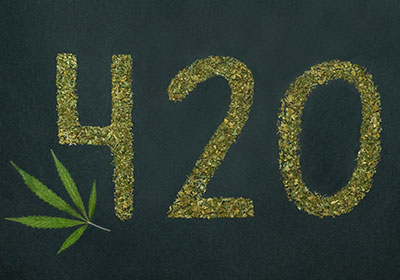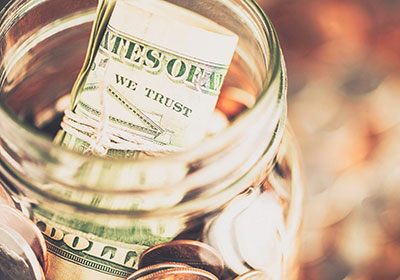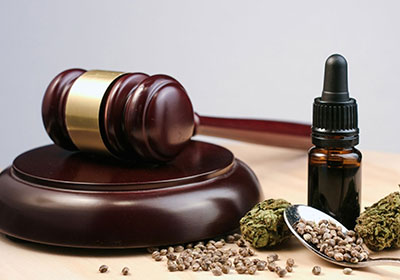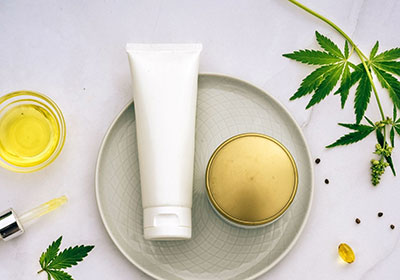Whether you refer to your medicine as Medical Cannabis or Medical Marijuana, what you purchase from a licensed Utah pharmacy starts out as a plant grown somewhere in the state. Growers can produce plants with feminized seeds, crossbreed to varieties of plants, or use cloning of existing plants. It is this third option that tends to confuse people.
We talk to people all the time who want to know what cloning is and whether it produces better Medical Cannabis. Fortunately, the answers to both questions are pretty straightforward. Despite all we don't know about this amazing plant, we do know a lot about cloning and its effect on plant characteristics.
Start a discussion about cloning and most people will begin imagining some sort of futuristic, sci-fi environment in which human beings are being cloned from single cells. Images of Star Wars: The Clone Wars might even pop into your head. But cloning cannabis plants is not so extravagant or cutting-edge and the real world. It is not even a new practice.
Cloning a Medical Cannabis plant is a simple as cutting a piece off an existing plant and putting it into a specialized growing medium in hopes of it taking root. Farmers have been practicing it for millennia. Your mother or grandmother may have done it years ago in order to grow new plants at home so that they didn't have to buy them from the nursery on the other side of town.
It turns out that some plants respond better to cloning than others. Cannabis is one of those plants that does very well. That is good for growers because controlling quality when you are growing plants from feminized seeds isn't so easy.
Maximizing the benefits of medical cannabis is all about concentrating cannabinoids and terpenes. This is done through a combination of good growing practices and hybridization. But again, getting the exact results you want from seeds is challenging. So as soon as a grower manages to produce an exceptionally strong plant, that plant can be separated out and used as a mother plant for cloning.
In essence, cloning gives growers the opportunity to better control quality and consistency. It makes it easier for them to consistently produce high-quality plants season after season. And of course, that leads to the question of whether cloning produces better medicine.
The quality of any cannabis plant is affected by lots of things. That's why Medical Cannabis is grown predominantly in controlled environments. Growers do not just plant a field and forget about it. Most of the cultivation in Utah takes place indoors, where growers can control everything from humidity to temperature to light exposure. They can also keep pests away.
All of this is to say that growers go to great lengths to ensure quality. Cloning helps inasmuch as it takes most of the characteristic variation out of the equation. Imagine you produce a THC-heavy plant with a particular terpene profile. Once you are satisfied with the quality of the plant, you can start cloning it. You can also control its growing environment by keeping your operation indoors. With few external influences to harm the plant's quality, you can maintain its characteristics.
In a nutshell, cloned cannabis is a plant grown from the cutting of a mother plant. It tends to produce better quality Medical Cannabis simply because desired characteristics can be maintained with each clone. As Utah growers get better at cloning, the quality of the state's Medical Cannabis continues to improve. That is good for growers and patients alike.
People tend to talk about Medical Cannabis in a very general sense. In other words, they discuss cannabis as though it is, in and of itself, a medicinal product. It is not. Cannabis is a plant. We extract certain compounds from the plant and use them as medicines. A critical step in the process is something known as decarboxylation.
Decarboxylation is that which makes cannabis effective as a medicine. If you attempt to use cannabis without decarboxylating it first, it isn't going to do you much good. Why? Without getting too scientific, it is all about the natural state of the compounds in the plant.
The starting point for understanding decarboxylation is knowing that there is a lot going on inside a cannabis plant. A typical cannabis plant contains more than five hundred different chemicals. Just over 140 of them are cannabinoids. That's what we're after in terms of manufacturing Medical Cannabis products. We want cannabinoids like THC and CBD.
All the cannabinoids that naturally occur in plant material are actually in the form of acids. In that form, they do not interact with the human endocannabinoid system, which pretty much makes them of no medicinal value. We have to change their state to make them useful. That is what decarboxylation accomplishes.
Decarboxylation simultaneously separates an acid's carboxyl group and releases carbon dioxide. You are left with an active cannabinoid that the human body can more readily interact with.
As far as how decarboxylation is accomplished, there are different ways to do it. The easiest and most common method is applying heat. For instance, a Medical Cannabis processor uses one of several methods to extract cannabinoids and terpenes from plant material. Extracts are then distilled in order to separate the individual components.
This is where it gets interesting. Distillation is accomplished by heating up the extract to boiling point. While the various components are being distilled the cannabinoids are also being decarboxylated. It's a two-for-one that gives processors the cannabinoids they need to make Medical Cannabis products.
If you were to make your own edibles at home using raw flower, you would accomplish decarboxylation by heating the plant material. A lot of recipes call for breaking up plant material and adding it directly to the rest of the ingredients. Cooking those ingredients decarboxylates the cannabis. Plant material can then be strained away afterwards.
Just for the record, burning cannabis decarboxylate cannabinoids on the fly. That is why you can dry-heat unprocessed flower and still derive medical benefits from it. Dry heating doesn't actually burn the material. Rather, it heats it to a temperature just below combustion.
Decarboxylation is frequently associated with turning inactive THCA into active THC. But the need to decarboxylate applies to all cannabinoids. So even if your medicines are primarily CBD products, a processor had to decarboxylate the CBDA to get useful CBD from it.
Now that you know the basics about decarboxylation, it should be easier for you to understand why Medical Cannabis processors in Utah are such a critical link in the chain. Utah law prohibits smoking marijuana, so patients need other delivery methods. All those other methods, with the exception of dry heating, require that cannabinoid acids be decarboxylated during processing.
Decarboxylation is the process that transforms cannabinoid acids into active cannabinoids. Although the cannabis plant has other uses, decarboxylation makes it an effective tool in treating medical conditions like pain and PTSD.
 Spring is here and so is our favorite holiday, 4/20. While using cannabis is the obvious way to observe April 20th, we wanted to give you some other ideas.
Spring is here and so is our favorite holiday, 4/20. While using cannabis is the obvious way to observe April 20th, we wanted to give you some other ideas.
If you love the leaf, here are some ways to grow your knowledge and become a true cannabis champion.
For an article about smart ways to celebrate 4/20, this one might seem like a bit of a no-brainer. Nevertheless, we think the smartest way to use cannabis is with the protection of a Medical Cannabis Card.
As a Medical Cannabis cardholder, you can purchase, possess, and use cannabis without worrying about violating state laws. When you buy cannabis at a state-licensed pharmacy, you have the satisfaction of knowing your product is as safe and effective as possible.
Getting your card is easier than you might think. Visit utahmarijuana.org/reserve to schedule an appointment with one of our Qualified Medical Providers.
 Write Your Elected Officials
Write Your Elected OfficialsEarlier this month, the U.S House of Representatives voted in favor of the MORE Act, a bill to decriminalize cannabis at the federal level. None of Utah’s congressmen voted “yea” on the bill, but it’s encouraging that most members of the House want cannabis decriminalized.
A victory in the House alone isn’t enough to decriminalize cannabis. For the measure to become law, the U.S. Senate also has to grant its approval. Although the MORE Act is not expected to advance through the Senate, some senators are working on their own solution.
U.S. Senator Chuck Schumer and some of his colleagues are working to finalize provisions in the Cannabis Administration & Opportunity Act (CAOA). Like the MORE Act, CAOA would repeal the federal prohibition of cannabis by removing it from the US Controlled Substances Act.
If you want the federal prohibition of cannabis to end, consider writing to the congressman and senators elected to serve you. You can do this very easily on the Marijuana Policy Project website. For even further impact, look up your representatives in the Utah Legislature and write to them too.
 Do Your Part to Destigmatize
Do Your Part to DestigmatizeFor the last several decades, people raised in America have been exposed to a barrage of powerful anti-cannabis messages. In recent years, a majority of states have legalized cannabis in some form, but there remains a heavy stigma around the drug.
Despite polls that show a majority of American voters support legalization, some people still view cannabis as part of a counterculture.
Many of them will never change their minds about cannabis. Others will change their minds, but only if they hear about the benefits of cannabis from someone they trust. Someone like you.
Destigmatizing cannabis certainly won’t happen overnight, but we might accelerate the process by sharing our viewpoints with others. If Medical Cannabis has helped you in some way, consider sharing that information with people you know.
The story of your unique experience with cannabis might be all it takes to help someone else understand its value as a powerful and effective medicine.
 Donate to Uplift
Donate to UpliftUtah now has nearly 50,000 patients registered in its Medical Cannabis program. We’re encouraged that such a large part of the population can finally get the relief they need.
But there are other qualifying patients who, for financial reasons, have yet to join. That’s why we decided to launch Uplift, a charity that subsidizes Medical Cannabis evaluations for those in need.
Since December, our patients and partners have helped us raise enough money to fund Medical Cannabis evaluations for over 100 people. Through donation-matching, Utah Therapeutic Health Center and its partners multiply donations by 800%.
If you enjoy the privilege of using Medical Cannabis, consider helping others to do the same. Visit utahmarijuana.org/uplift for details.
 Know Your Rights
Know Your RightsAs we said earlier, Medical Cannabis cardholders in Utah can legally purchase, possess, and use cannabis. But there are some limitations to those privileges.
WholesomeCo Cannabis lawyer JD Lauritzen and UTTHC founder Tim Pickett answered the most common questions about Utah’s Medical Cannabis laws. Click here to watch their “Know Your Rights” webinar on YouTube.
On 4/20, remember that using cannabis in public view is still illegal, even for Medical Cannabis cardholders, except in emergencies. We recommend using your cannabis at home, or at another private residence whose owner has given you the green light.
 Try Something New
Try Something NewIf you’ve been using Medical Cannabis for a while, you’ve probably figured out your “go-to” strains and methods of consumption.
You might prefer to inhale cannabis using a cartridge or a dry herb vaporizer. Maybe you prefer using cannabis in an edible or a tincture form. But there are other ways to use Medical Cannabis that you may not have heard of or tried yet.
Medical Cannabis is available in a variety of delivery methods, and you might not be using the best one for your needs. Next time you’re at the pharmacy, consider picking up a product that is entirely new to you.
If you need fresh ideas, we've put together a handy shopping guide with a variety of suggestions on Medical Cannabis products to try.
From everyone at Utah Therapeutic Health Center, we wish you a safe and happy 4/20!
Utah's Limited Medical Provider (LMP) program was launched in earnest recently. The program is meant to expand access to Medical Cannabis by allowing more types of healthcare providers to write recommendations for the drug. But, when possible, we urge LMPs to advise patients to visit a Qualified Medical Provider (QMP) to obtain a Medical Cannabis Card.
The Medical Cannabis Card represents a patient's opportunity to access medicines that can only be obtained by way of a Medical Cannabis pharmacy. The card also represents a medical provider's recommendation that cannabis be utilized as a treatment. We believe that the QMP is the most qualified medical provider to offer that recommendation.
Prior to launching the LMP program, Utah's Medical Cannabis patients could only obtain their cards after visiting with a QMP. Now they can visit with either a QMP or LMP. What is the difference?
A QMP is a medical provider licensed by the state of Utah with prescribing authority and state certification to recommend Medical Cannabis to up to 275 patients. If a QMP is “certified by the appropriate American medical board”, in certain areas of specialty, up to six hundred recommendations can be made.
An LMP is also a state-licensed medical provider with prescribing authority in Utah. The LMP can be a physician, nurse practitioner, physician assistant, or podiatrist. LMPs can recommend Medical Cannabis to up to 15 adult patients (ages 21 and up) at any one time.
The big difference between the two types of providers is training. Unlike QMPs, LMPs are not required to receive any additional training in the human endocannabinoid system or cannabis as a medicine. In order to become a QMP, a medical provider must complete an approved training course.
Although LMPs aren’t required to undergo additional Medical Cannabis training, the state does provide some training resources for them. See the “Limited Medical Provider Resources” section on this page for details.
To us, the main difference between the LMP and the QMP is education. In addition to the state-mandated training program, QMPs often have more education in Medical Marijuana and its use as a medicine. They tend to be more educated in how Medical Cannabis can be used as an effective treatment for conditions like chronic pain, PTSD, seizure disorders, etc.
This really is the main reason we urge LMPs to advise their patients to see a QMP to obtain a Medical Cannabis card. There is still a lot that medical science does not know about cannabis as a medicine. As such, standard medical training doesn't necessarily equip a medical provider to truly understand the benefits of using cannabis as a medicine.
In the best interests of patients, their medical providers should have a good understanding of Medical Cannabis. They should be up to date on the latest research. They should understand things like Medical Cannabis delivery methods and dosage. Medical providers should have a basic grasp of things like layering and the differences between CBD and THC.
The state legislature did the right thing by approving the LMP program. The program us especially important in rural parts of the state, where patients may not have reasonable access to a QMP. In such cases, being able to visit with an LMP to obtain a Medical Cannabis Card is a better option than continuing to go without what could prove to be a life-changing medicine.
Having said that, we do think it is best for patients to visit with a QMP when possible and practical. A QMP has gone beyond standard medical training to learn about Medical Cannabis and its applications. In that sense, it would be fair to think of recommending Medical Cannabis as somewhat of a specialty. QMPs are the specialists in this case.
The 2022 legislative session was another busy one for Medical Cannabis advocates. Lawmakers took up several bills intended to both increase access and further regulate advertising, labeling, and synthetic cannabinoids. Overall, the session turned out fairly well for the Medical Cannabis community.
Below is a summary of the action that lawmakers took this year. Bear in mind that most legislative updates in the Medical Cannabis space take time to implement. It will be a while before we see all the changes in full force.
One change that got a lot of press is a regulation that bans analog THC products in Utah. The ban was part of SB 190, a bill intended to clarify what products can and cannot be sold in Utah. It is believed that the ban is in direct response to the popularity of Delta-8 THC.
For now, the state does not support the use of analog THC products for medical purposes. That is not to say that lawmakers are not open to approving analogs at some point down the road. But for now, a lack of scientific evidence relating to both efficacy and safety will not allow lawmakers to green light analog THC products.
By the way, our own Tim Pickett discussed SB 190 in a recent Utah In the Weeds podcast. We encourage you to take a listen to learn more about this year's legislative session. The podcast was originally recorded in February 2022.
Lawmakers used this year's session to expand access to patients diagnosed with acute pain and terminal illnesses. Acute pain is pain that comes on suddenly and does not last long enough to qualify as chronic pain. Adding acute pain to the list of qualifying conditions was an important goal this year, especially because it can be just as severe and debilitating as chronic pain.
It should be noted that there are limits to recommending Medical Cannabis for acute pain and terminal illness patients. It is up to Qualified Medical Providers (QMPs) to know what those limits are.
The same bill also expands access to Medical Cannabis for terminally-ill patients by requiring hospice programs to have at least one Qualified Medical Provider.
On the industry side of things, several bills are moving the state closer to a strong set of standards. Lawmakers took on the task of more closely regulating how Medical Cannabis products can be marketed and labeled. SB 190 addressed marketing and labeling to some degree by clarifying the differences between industrial hemp and Medical Cannabis.
Meanwhile, SB 153 creates a Cannabis Commission working group tasked with the mission of studying the industry and making recommendations for future standards.
HB 2, an appropriations bill, allocates different parts of Utah’s state budget. Part of the budget will go toward a new study on using cannabis to treat chronic pain.
Rich Oborn, the Utah Department of Health’s Medical Cannabis Program Director, recently told us a little bit more about that study on the Utah in the Weeds podcast.
“[I]t’ll be done through an RFP process where academic researchers at universities have an opportunity to bid on receiving these funds. But we're very serious about funding research, and we're excited about the legislature having an interest in doing it,” Oborn said.
Finally, although lawmakers were not able to address the federal ban against marijuana consumption among police officers, they did pass legislation that prohibits public sector employers in Utah from discriminating against Medical Cannabis patients. The legislation was in direct response to a Utah firefighter whose job was put in jeopardy when it was revealed he possessed a Medical Cannabis Card. Thanks to the legislation, public sector employees must now treat Medical Cannabis like any other prescription drug.
2022 was generally a good year for Medical Cannabis legislation. Utah's program is improving little by little. Our thanks to legislators who are looking out for Medical Cannabis patients and the industry as a whole.
There are a lot of cannabis-related phenomena that, up until recently, were things people just talked about behind closed doors. But with cannabis legalization spreading across the country, some of these phenomena are starting to come out of the closet. One such phenomenon is known as the “cannabis shakes.”
Anecdotal evidence suggests that the cannabis shakes are legit; people really do experience them from time to time. Perhaps you have. At any rate, the cannabis shakes are not dangerous. Yes, they can be uncomfortable and a little disconcerting, but shaking after consuming cannabis is not likely to harm you.
We know from the testimonies of Medical Cannabis users that the shakes are legit. Unfortunately, we don't know what causes them. There hasn't been a whole lot of scientific research into this particular phenomenon. That is going to change at some point but until then, we can only offer some educated guesses as to why some cannabis users experience the shakes.
The Cannigma website recently published a great post talking about the cannabis shakes. They offered a number of possible causes:
Animal studies have demonstrated that THC can cause a drop in body temperature. The same thing has been observed in human beings as well. So if that's the case, even a slight drop in body temperature would make a person feel cold. That could be enough to induce shaking.
As a cannabis user, you might be so preoccupied with the shakes that you don't realize you feel cold. Figuring it out would prompt you to grab a blanket or throw on a jacket. As you warmed up, the shakes would go away.
Some people experience mild anxiety when using cannabis. For others, the anxiety could be significant enough to cause shaking. It is really not all that different from being so angry that you're shaking, or even being so scared by something that you get the shakes. It's just your emotions getting the better of you.
It is possible that some people get the cannabis shakes because they combine their Medical Cannabis with other stimulants. For example, have you ever heard people say they avoid coffee because it makes them jittery? The caffeine in coffee is a stimulant. If you were to experience the shakes first thing in the morning, after drinking a cup of coffee and then using Medical Cannabis, chances are that you're experiencing the result of combining multiple stimulants.
Using too much cannabis in too short a time can result in a phenomenon known as “greening out.” We recently published another post discussing this phenomenon, if you're interested. That said, one of the symptoms of greening out is feeling anxious or uneasy. Combine those feelings with another symptom, increased heart rate, and you could experience the shakes.
Experiencing the shakes can be a bit unpleasant. Is there anything you can do about it? Yes, but only after you figure out the exact trigger. If you are shaking because you are cold, put on some warmer clothing. If the shakes are a result of greening out, slow down. Do not use so much cannabis in so short a time.
As a Medical Cannabis patient, don't be alarmed if you experience the shakes from time to time. The shakes are a normal reaction to the drug that some patients experience. It is not a dangerous condition, and it generally goes away on its own. If you persistently experience the shakes, talk with your QMP or PMP about using CBD instead.
Medical Cannabis can do wonders for patients suffering from all sorts of qualifying conditions. However, getting to that place of being comfortable about using your medicine is not so easy. Finding the 'right formula' is often a matter of trial and error. Dosing alone can take a while to nail down.
If you are new to Medical Cannabis, there is something you should know about dosing: it is not an exact science. Cannabis dosing is not the same as dosing FDA-approved prescription medications. There are reasons for that, which we’ll get into shortly. The main point we want to emphasize is the need for you to work with your Qualified Medical Provider (QMP) or Pharmacy Medical Provider (PMP) to figure out the best dosage for you.
We are guessing you have gotten prescriptions from your doctor in the past. Maybe you have received antibiotic prescriptions. Perhaps you have taken prescription medicine for allergies, high blood pressure, or whatever. All those FDA-approved drugs have one thing in common: they have undergone multiple levels of clinical trials prior to approval.
Clinical trials are mainly designed to test safety and efficacy. But they offer an added benefit: they allow manufacturers and the FDA to come up with solid dosing guidelines. Doctors familiarize themselves with those guidelines prior to writing prescriptions. That is what enables them to say you should take so much of a drug, so many times per day.
Medical Cannabis hasn't undergone such extensive clinical testing. The result is that we just don't know much about dosing. On top of that, dosage is affected by delivery method. And because there are so many different delivery methods, it can be difficult to say how much of a particular product you should use in order to feel better.
The general rule of thumb for new Medical Cannabis patients is to “start low and go slow.” In fact, this is a common slogan within the Medical Cannabis community. Learn it, love it, and live it.
Starting low means starting with a product with a low dose of THC. Remember that THC is the cannabinoid that makes you feel high. It can also have other side effects, including the sensation of a racing heart. This is enough to scare new users despite it not being dangerous.
Going slow means being careful about how frequently you use. Using too much, too quickly, can result in side effects that you find unpleasant. That's a good way to turn yourself off from Medical Cannabis before you give it an honest chance to help you.
Since there are so many variations in dosage and delivery method, we always recommend that new Medical Cannabis patients track their results. You can track yours with paper and pen, on your smartphone, or any other means that works for you. The most important thing is that you do it.
To track the results of a particular medicine, you start by writing down a product's specifics: name, strain, delivery method, and cannabinoid/terpene profile. Every time you use the medicine, record the date and time. Follow that up by recording how the product makes you feel. Be honest and record both the good and bad.
Every bit of information you keep track of can be used to fine-tune dosing and delivery method. Over time, you and your PMP can figure out the most appropriate dosing for your symptoms. If you ever change products, you may have to start over again. Just keep that in mind.
That being said, what causes the racing heart? Research seems to suggest it is the THC. But as with all things relating to cannabis, people react differently. The way THC affects the heart is influenced by everything from frequency of use to individual metabolism.
If you experience a racing heart when you take your medicine, and it bothers you, do not be afraid to talk to your Qualified Medical Provider (QMP) or Pharmacy Medical Provider (PMP) about it. Either one should be able to answer your questions and offer you sound advice.
The ways in which cannabis affects the body is directly related to how it interacts with the endocannabinoid system. As the cannabinoids found in cannabis – like THC and CBD – bind to cannabinoid receptors throughout the central nervous system, they encourage the body to do certain things. In relation to a racing heart, it is believed that THC causes the blood vessels to dilate, increasing both blood flow and heart rate.
A number of studies over the years indicate that cannabis consumption can lead to something known as tachycardia. In plain language, tachycardia is an irregular heart rate that is too fast.
It is believed that smoking cannabis can increase heart rate by as little as 20% or as much is 100%. Science isn't quite sure if dry heating or vaping produces the same kind of effect. However, data does suggest that consuming higher doses of THC can have the opposite effect: a drop in blood pressure that leaves a user feeling lightheaded or dizzy.
The good news in all of this is that cannabis-related tachycardia is not a serious concern. It is uncomfortable, but it's not dangerous to most people. Medical Cannabis users don't need to be concerned about it unless there is a history of cardiovascular disease.
If you are a patient and concerned about it, you have options. You might want to talk to a PMP about different products with varying THC levels. You also have the option of looking for medicines that combine lower doses of THC with moderate levels of CBD. Why? Because there is emerging evidence suggesting that CBD can counteract some of the uncomfortable side effects caused by THC.
If science eventually proves this to be the case, it could be because CBD interferes with how THC binds to cannabinoid receptors. It is just a hunch at this point, but it is being investigated. At any rate, choosing a product with both THC and CBD could alleviate the unpleasant sensation of a racing heart.
The point of bringing all this up is to let you know that the sensation of a racing heart is normal when you consume Medical Cannabis. We want you to be aware ahead of time so that you aren't caught off guard. Please do not let a racing heart scare you away from the plant. It is a normal reaction to THC.
As always, talk to your QMP or PMP if you have any concerns. There are plenty of delivery methods, strains, and medical products to choose from. With a little help, you should be able to find a medicine that addresses your symptoms without making you feel extremely uncomfortable.
Reforming federal marijuana laws and federal decriminalization seems to be a hot topic all of a sudden. The U.S. House of Representatives is currently considering two cannabis reform bills. The Senate also has its own piece of legislation making its way through the process. How it all turns out is anyone's guess. But when it comes to rewriting federal cannabis laws, is it possible to please everyone?
This question stems from a recent article published on The Cannigma website. The piece, from contributor Codi Peterson, PharmD, does an excellent job of laying out the strong and weak points of the three federal bills. Peterson's main concern is that none of the three bills adequately address Medical Cannabis and the needs of patients.
How can this be? Because all three bills are primarily centered around de-scheduling and federal decriminalization. By extension, they do an excellent job of establishing a legal framework by which the recreational market can be controlled. But a lack of substantive proposals to regulate the medical market leaves a lot of consumers out of the equation.
As things stand, it does not appear there are any legislative efforts being undertaken on behalf of medical consumers. But if such legislation did exist, what would it look like? Intriguing proposals have been offered:
All these reform suggestions are both reasonable and necessary. But achieving them may prove to be a bit challenging due to marijuana's nature as both a medicine and a recreational product.
Peterson asserts that the three federal bills now being worked on assume that regulating the medical market would be left to the states. That being the case, Washington's only interest appears to be in the recreational market. But that leaves Medical Cannabis patients in a position only slightly better than where they are now. And yet, there may be no other way to proceed.
What if Washington follows through with the federal decriminalization of marijuana? How does Washington tax growers based on whether they are producing for the recreational or medical market? The very same question applies to processors. Guaranteeing that Medical Cannabis patients pay no tax while recreational users do would create an administrative nightmare.
Home grow is another issue. If home grow is allowed for medical purposes, how do you stop it for recreational purposes? And once you allow recreational home growing, is there any realistic hope of eliminating the black market?
There are no easy answers in any of this. Hopefully, lawmakers will find a way to address as many needs as possible in any final legislation. But when all is said and done, it is probably not possible to please everyone. No matter how marijuana is eventually decriminalized at the federal level, someone is going to be left out of the equation.